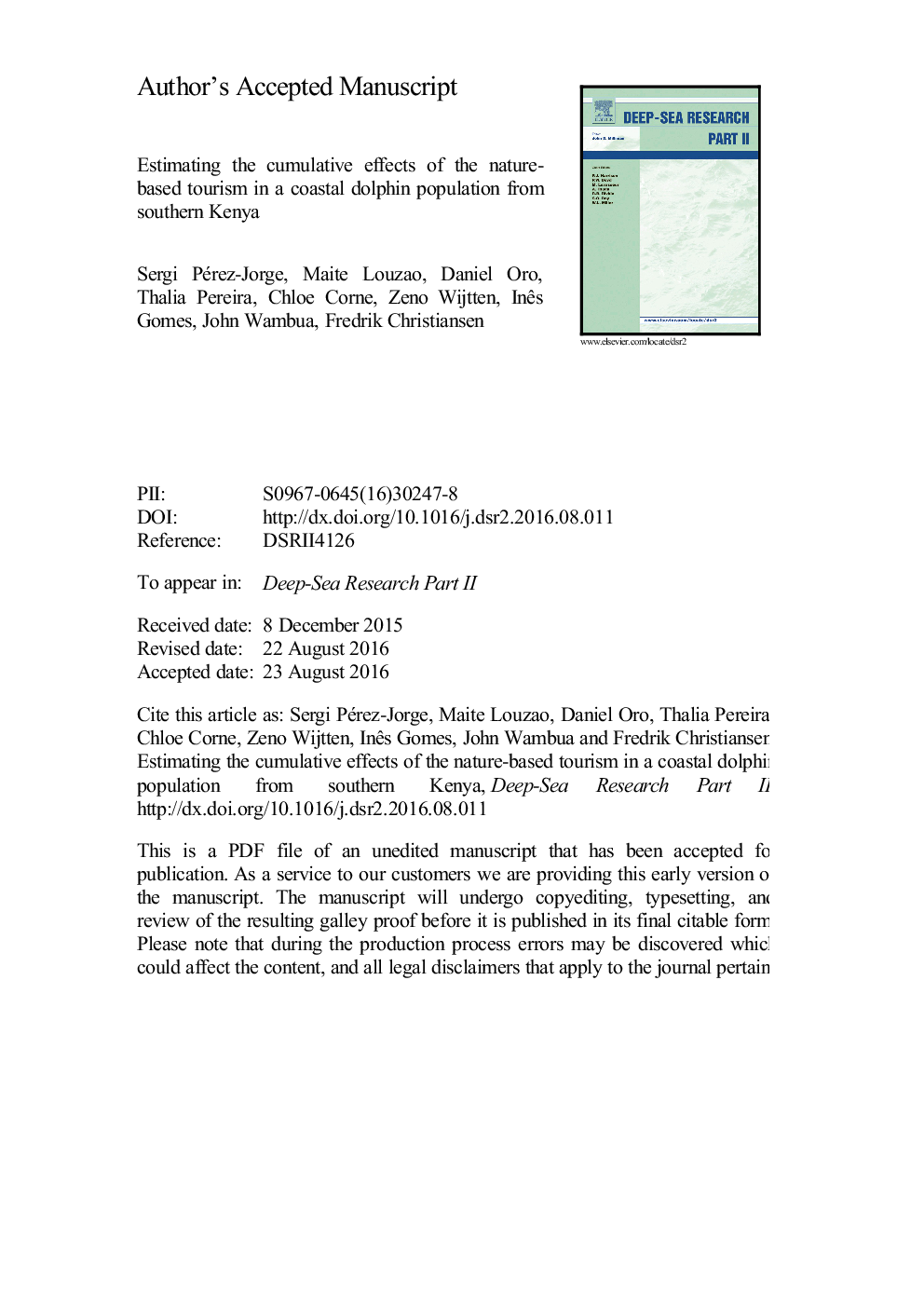ترجمه فارسی عنوان مقاله
برآورد اثرات تجمعی گردشگری مبتنی بر طبیعت در یک جمعیت دلفین ساحلی از جنوب کنیا
عنوان انگلیسی
Estimating the cumulative effects of the nature-based tourism in a coastal dolphin population from southern Kenya
| کد مقاله | سال انتشار | تعداد صفحات مقاله انگلیسی |
|---|---|---|
| 149630 | 2017 | 27 صفحه PDF |
منبع

Publisher : Elsevier - Science Direct (الزویر - ساینس دایرکت)
Journal : Deep Sea Research Part II: Topical Studies in Oceanography, Volume 140, June 2017, Pages 278-289
ترجمه کلمات کلیدی
در معرض گردشگری، پستانداران دریایی، اختلال رفتاری، کنیا،
کلمات کلیدی انگلیسی
Tourism exposure; Marine mammals; Behavioural disturbance; Kenya;

